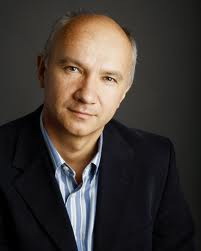 |
A Powerful Twist on Quantum Cryptography |
Biography Artur Ekert studied physics at the Jagiellonian University in Kraków and at the University of Oxford. Between 1987 and 1991 he was a D.Phil. student at Wolfson College, University of Oxford. In his doctoral thesis (Oxford, 1991) he showed how quantum entanglement and non-locality can be used to distribute cryptographic keys with perfect security. Abstract Human desire to communicate secretly is at least as old as writing itself and goes back to the beginnings of our civilisation. Over the centuries many ingenious methods of secret communication have been developed, only to be matched by the ingenuity of code-breakers. As a result, the quest for a perfect, unbreakable, cipher, had been declared a futile pursuit. That is, until recently! Recent research shows that the security of communication can be guaranteed using peculiar "non local correlations". Such correlations are typically found in the behaviour of quantum particles, and the work builds on schemes that I and others invented decades ago to do quantum cryptography - adding a powerful twist that we hadn't anticipated. By including a mathematical measure known as a 'Bell inequality' that detects non-local correlations, these newer cryptography schemes make a seemingly insane scenario possible - devices of unknown or dubious provenance, even those that are manufactured by our enemies, can be safely used for secure communication, including key distribution. This is a truly remarkable feat, also referred to as "device independent cryptography". All that is needed to implement this bizarre and powerful form of cryptography is a loophole-free test of a Bell's inequality. It is on the edge of being technologically feasible. I will provide a brief overview of the intriguing connections between Bell's inequality and cryptography and describe how studies of quantum entanglement and the foundations of quantum theory influence the way we may soon protect information.
|

